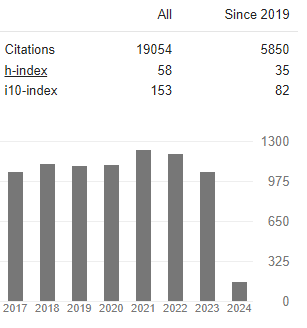Percutaneous Intramyocardial Septal Radiofrequency Ablation in Patients with Hypertrophic Cardiomyopathy - A Systematic Review and Meta-Analysis
Abstract
Fatema Tashrifwala, Manisha Purushotham, Sai Krishna Bhushan
Purpose: In this study, we aimed to meta-analyze all available data to provide a holistic, well-powered assessment of the effect of PIMSRA on LVOT gradient, LVEF, and anterior and posterior IVS thickness.
Methods: PubMed, Cochrane Central, Embase, and Scopus were systematically searched from inception till October 2022 for published clinical trials assessing the efficacy of PIMSRA in patients with HCM using the keywords “PIMS- RA” OR “Percutaneous Intramyocardial Septal Radiofrequency Ablation” OR “Liwen procedure.” Studies that re- ported change in either LVOT gradient, IVS thickness, or LVEF were selected. No time or language restrictions were applied. All case reports were excluded, and only clinical trials were included. The search and data extraction were carried out independently by two reviewers (MP, FT). A third reviewer (IH) was consulted to resolve discrepancies. All statistical analyses were conducted on Open Meta-analyst. Trials were pooled using a continuous random effects model (DL: DerSimonian-Laird), and results were presented with 95% confidence intervals (CIs). P value 75% re- garded as substantial heterogeneity.
Results: All five studies reported a change in LVOT gradient from the baseline. Integrated analysis showed no sig- nificant change from baseline (MD: -69.506; 95% CI: -77.047, -61.966; P = 0.089) (I2 = 50.4%). Subgroup analyses based on follow-up revealed that there was no significant difference noted at 6 months according to data from 2 studies (MD: -65.351; 95% CI; -85.253, -45.450; P = 0.181) (I2= 44.1%) however data from 3 studies at one year follow up did reveal a significant difference from baseline (MD: -71.010; 95% CI: -80.262, -61.758; P = 0.047) (I2 = 67.2%). Only three studies reported changes in LVEF from the baseline. Integrated analysis Powered by Editorial Manager® and ProduXion Manager® from Aries Systems Corporation showed a significant change from baseline at one-year follow-up in patients who underwent PIMSRA (MD: -1.760; 95% CI: -3.239, -0.282; P = 0.047) (I2 = 67.22%). The pooled analysis from four studies that reported anterior IVS thickness showed no significant change from baseline (MD: -9.707; 95% CI: -10.819, -8.595; P = 0.095) (I2 = 52.94%). Subgroup analyses based on follow-up revealed that there was no significant difference noted at 6 months (MD: -11.285; 95% CI; -12.825, -9.744; P = 0.933) (I2 = 0%) or at one-year follow-up (MD: -9.147; 95% CI: -9.837, -8.456; P = 0.650) (I2 = 0%) The combined analysis of the four included studies reporting posterior IVS thickness showed no significant change from baseline (MD: -8.859; 95% CI: -10.073, -7.644; P = 0.119) (I2 = 48.73%). Additionally, there was no significant difference noted in the sub- group analysis at 6 months (MD: -10.278; 95% CI; -12.133, -8.423; P = 0.934) (I2 = 0%) and at one-year follow-up (MD: -8.335; 95% CI: -9.880, -6.789; P = 0.072) (I2 = 69.14%)
Conclusion: This single-arm meta-analysis of 284 patients gathered from 5 clinical trials suggested that overall, after PIMSRA, LVOT gradient was reduced, and LVEF was slightly decreased. Additionally, no significant changes were observed in the anterior and posterior IVS thicknesses. Our results had substantial heterogeneity, which could be explained due to differences in the follow-up periods and studies with small sample sizes. It is important to note that even though no significant difference in follow-up was seen from the baseline at 6 months, there was indeed a significant difference noted at one year when assessing the outcomes of LVOT gradient. This could suggest that longer follow-up periods are imperative to truly observe the procedure's efficacy.





